Namibia
A True Paradise For The Adventure Traveler
Is Namibia A Suitable Destination For Travelers?
Namibia is an exceptional destination for travelers, especially if you appreciate unique landscapes and experiences. The country offers vast expanses that require long drives, allowing you to witness its breathtaking desert scenery. Namibia's terrain is predominantly arid, with the Namib Desert being the world's oldest desert, characterized by its striking sand dunes and stark beauty.
One of the highlights of visiting Namibia is the opportunity to observe incredible wildlife in Etosha National Park, renowned for its diverse array of animals. Here, you can see elephants, lions, rhinos, and a variety of other species in their natural habitat, making it a paradise for wildlife enthusiasts and photographers.
The country's coastline, known as the Skeleton Coast, is famous for its wild Atlantic waves and dramatic landscapes. While these stretches of sand may not fit the typical image of sunbathing beaches, they offer an awe-inspiring sight with their rugged beauty and powerful ocean currents.
Overall, Namibia provides a remarkable blend of adventure, natural beauty, and wildlife experiences, making it a compelling choice for those seeking an unconventional and memorable holiday.
An Authentic Haven For Adventure Enthusiasts
Namibia is a largely arid country of stark rough-hewn beauty. The most vivid images are those of a haunting technicolor landscape of swirling orange dunes, shimmering mirages and treacherous dust devils. The apparent desolation is deceptive and plant and animal life and even man has adapted to this environment. The country is designed almost specially with the active and adventure seeker in mind. Timeless deserts, thorn bush savanna, desolate wind ravaged coastlines, majestic canyons, and sun-baked salt pans are the bounty that awaits the traveler. Namibia's top draw is the Etosha National Park, rated as one of Africa's finest game sanctuaries. The birding experience in the country is truly superior. The range of activities you can indulge in the unsurpassable physical environment is truly impressive. Ballooning over the desert, skydiving over land and sea, paragliding, whitewater rafting and sand skiing along coastal dunes are good activities for starters.
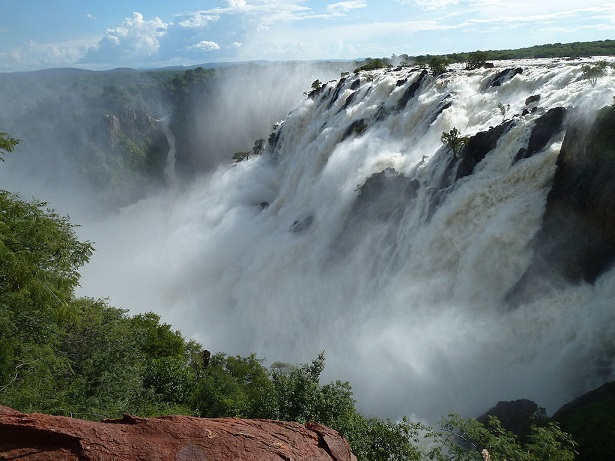
More fun games to pick from include abseiling - that most spectacular of rock sports, coastal and fresh water angling, desert camel riding, scuba diving, 4x4 desert runs, hiking and mountaineering. Namibia has four distinct geographical regions. In the north is Etosha Pan, a great area for wildlife and heart of Etosha National Park. The slender Caprivi Strip is nested between Zambia and Botswana and is a wet area of woodland blessed with a few rivers. Along the coast is the Namib Desert, which at the age of 80 million years old, is said to be the world's oldest desert. At the coast, the icy cold Atlantic meets the blazing African desert, resulting in dense fogs.
The well-watered central plateau runs north to south, and carries rugged mountains, magnificent canyons, rocky outcrops and expansive plains. Namibia, one and half times the size of France, is very sparsely inhabited and carries only 1.8 million souls. The people are as unique as the land they live on. The most intriguing are the San, otherwise known as Bushmen. These most hardy of people have a highly advanced knowledge of their environment. It is a marvelous thing how well they are adapted to their difficult habitat. Just pause and think that these are the only people in the world who live with no permanent access to water.
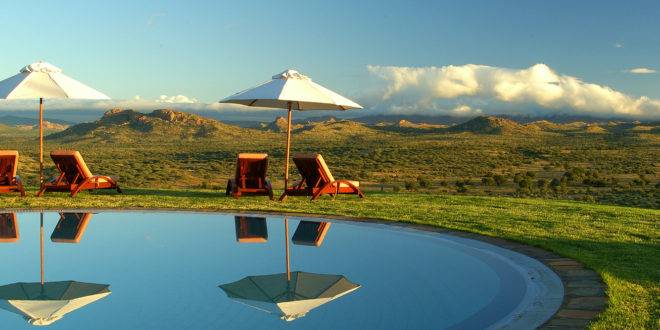
Namibia Caprivi Reserve falls
In the Kalahari Desert, one of their domiciles, surface water is not to be found. Tubers, melons, and other water bearing plants as well as underground sip wells supply their water requirements. In Namibia today, Bushmen number about 50,000. Historians estimate that they have lived, mostly as hunters and gatherers, for at least 25,000 years in these parts of the world. Bushmen speak in a peculiar click language and are very gifted in the arts of storytelling, mimicry, and dance. Namibia's other people, who are indigenous to the continent, are mostly of Bantu origin. They are thought to have arrived from western Africa from about 2,400 years ago.
Namibia Safari
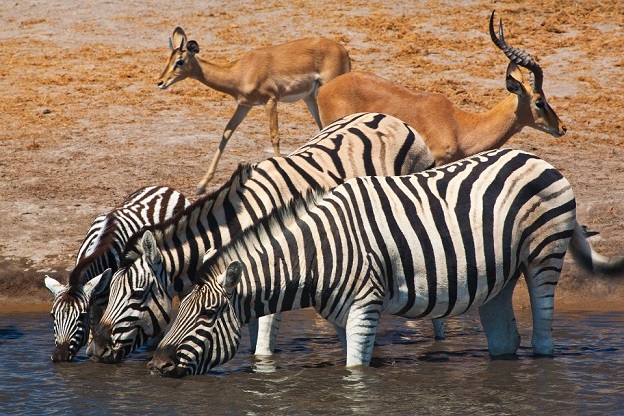
The African groups include the Owambo, Kavango, Caprivians, Herero, Himba, Damara, Nama and Tswana. The Africans aside, other groups comprise about 15% of the population and have played an important role in the emergence of the modern nation. White Namibians amount to about 120,000 and are mainly of German and Afrikaner heritage. Germans arrived in significant numbers after 1884 when Bismarck declared the country a German Protectorate. Afrikaners, white farmers of Dutch origin, moved north from their Cape settlements, especially after the Dutch Cape Colony was ceded to the British in 1806. This strongly independent people, whose ancestors had lived in the Cape from 1652 resented British control.
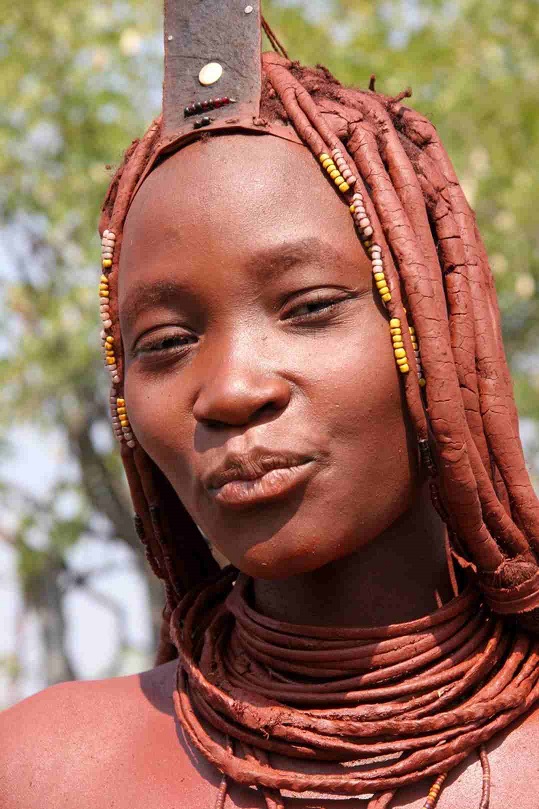
Two other distinct groups complete the spectrum of Namibia's people - Basters and Coloureds. Coloured in Namibia and southern Africa refers to people of mixed racial heritage, black- white for example. They have a separate identity and culture. This makes sense considering that Namibia was run by South Africa after the First World War.
Even in pre-Apartheid South Africa, racial classification was a fine art. The Afrikaans-speaking Basters, descended from Hottentot women and Dutch settlers of the Cape. Alienated from both white and black communities, they trekked northwards, finally founding their own town Rehoboth, in 1871.
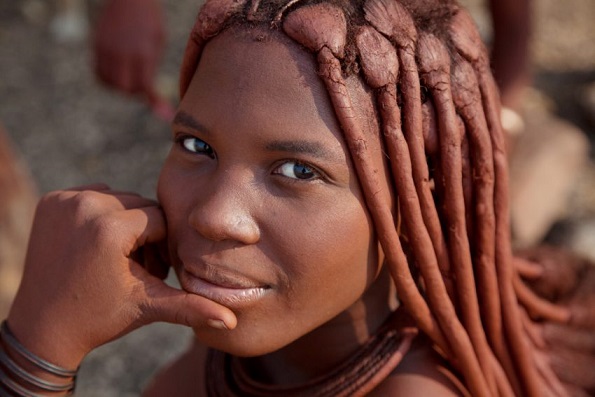
Baster is actually derived from "bastard", but it is not derogatory, and the Basters are indeed proud of it. Namibia's barren and unwelcoming coastlines served as a natural deterrent to the ambitions of European explorers. That was until 1884 when the German merchant Adolf Luderitz established a permanent settlement between the Namib Desert and the Atlantic seaboard that afterwards took his name. Bismarck subsequently declared the territory covered by Namibia a German colony and named it Südwestafrika or South West Africa. As German settlers moved into the interior, conflict was inevitable with the inheritors of the land. The German occupation was a particularly unhappy experience for the Herero. The Herero resented the German's harsh and racist rule and the effect of the encroachment on their lands on their livelihood and way of life.
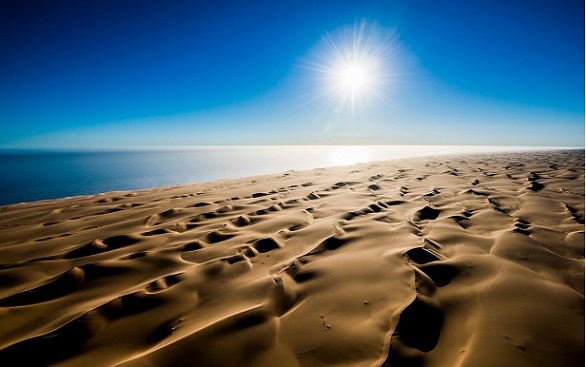
Namib Desert Meets The Atlantic Ocean
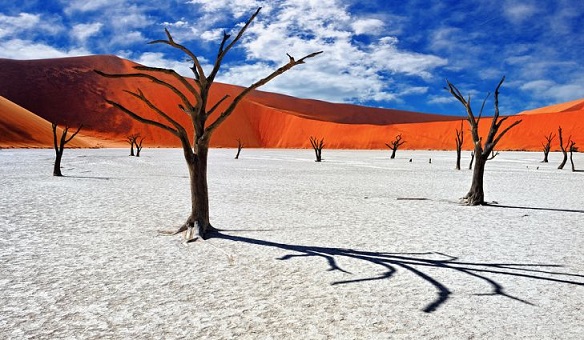
Namibia Sossusvlei
On the first day of the year 1904, the Herero led by Chief Samuel Maharero, rose suddenly and unexpectedly in arms against their colonial overlords. The Nama joined the insurrection and the authorities did not regain control even after six months of trying. Over 100 German settlers and soldiers died in the uprising. Historians now consider events that followed to constitute the first genocide of the twentieth century. Lieutenant General Lothar von Trotha was furnished with a contingent of 14,000 soldiers and tasked to put down the rebellion.
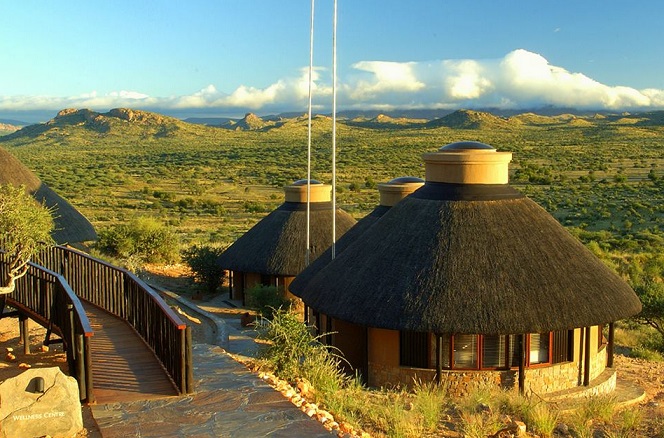
Namibia Windhoek Nature Reserve
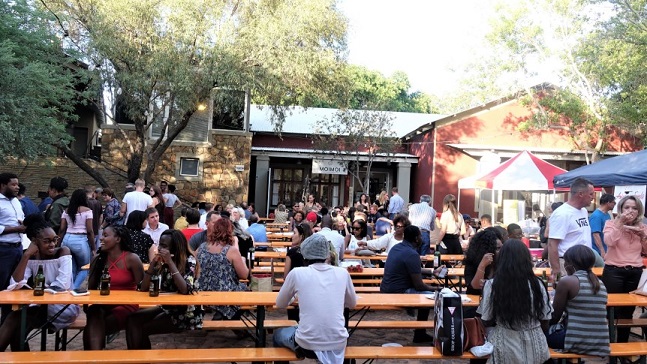
Windhoek City Market
The governor general of the territory was then Rudolph Goering -the father of Herman Goering, Hitler's right hand man. Lothar von Trotha was a generation ahead of his time and his kind of thinking was to become government policy under the Third Reich. He argued that the Herero must be destroyed as a people and he did not wince at the murder of women or children. At the end of it all, 100,000 Nama and Herero were killed. The survivors were herded in concentration camps where unspeakable things happened. The Herero fared very badly and 80% of her people perished. The population of the Nama diminished by 35-50%. Windhoek, the capital of 165,000 people is the only true city in the country.
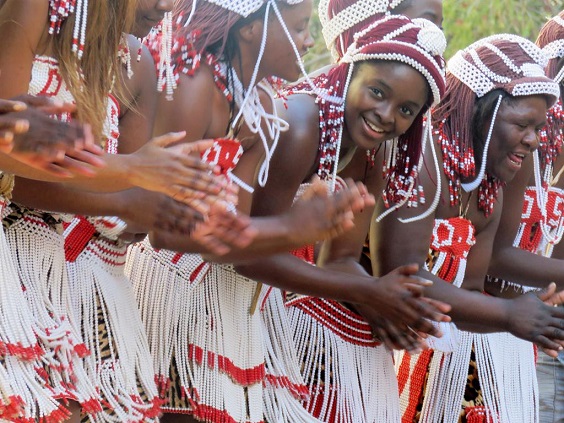
Namibia Cultural Festival
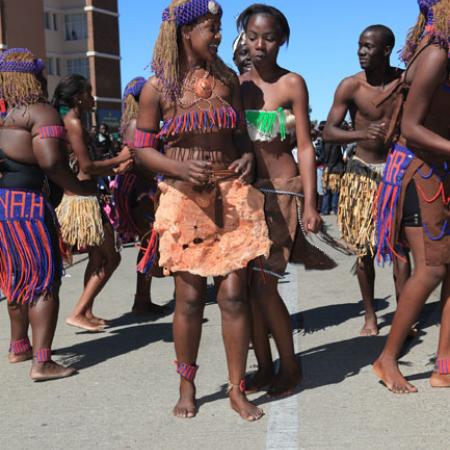
For those traveling to more remote regions, this is where you settle practical matters. The positive aspects of the German period can be seen in the charming style of older buildings in the city. Places of interest in the city include the State Museum, State Archives, and the Namibia Crafts Centre. The Dan Viljoen Game Park lies 24 Km west of Windhoek on the gentle hills of Khoma Hochland. In this resort you find ostriches, baboons, zebras and over 200 species of birds. The Waterburg Plateau Park, located 230 km from Windhoek is popular with weekenders.
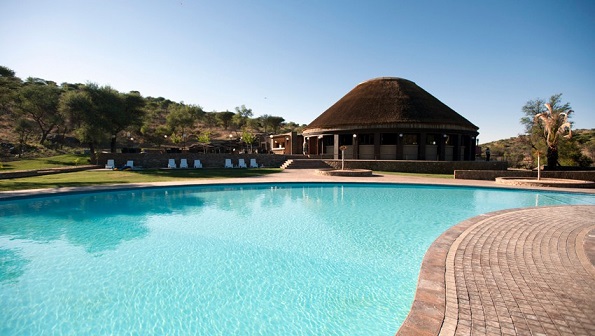
Namibia Dan Viljoen Game Park
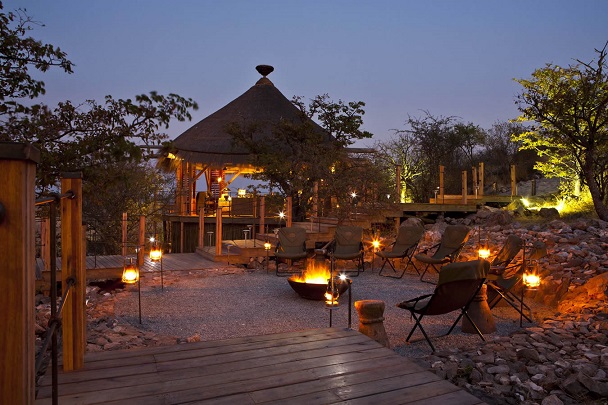
Namibia Etosha National Park
This extensive mountain wilderness is home to cheetah, leopard, kudu, giraffe, and white rhino. Etosha National Park is what brings wildlife lovers to Namibia. The park is comparable in size and diversity of species with the best in Africa. The unusual terrain of Etosha holds savanna grassland, dense brush and woodland. But it is the Etosha Pan, a depression that sometimes holds water and covers 5,000 sq km, that is the heart of park. The perennial springs around the pan, attract many birds and land animals in the dry winter months. The effect of this background is magical and some of the best wildlife photographs have been taken here.

There are 144 mammal species in the park and elephants are particularly abundant. Some other interesting wildlife here includes giraffe, leopard, cheetah, jackal, blue wildebeest, gemsbok and black rhino. The birding is great at Etosha and over 300 bird species have been recorded. You will get best value by spending at least three days here. There are excellent accommodation facilities at the three rest camps of Namutoni, Halali and Okaukuejo. The best time to see animals is between May and September, when water draws them in huge numbers to the edge of the pan.
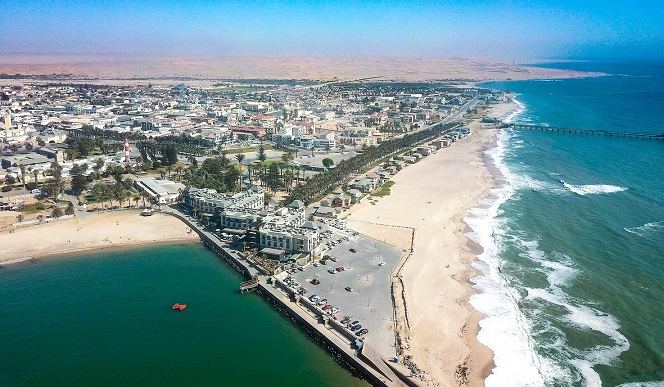
Namibia Swakopmund
Etosha is 400 km to the north of Windhoek by road. The Fish River Canyon is unrivalled in Africa and only the Grand Canyon in the U.S in larger. The Canyon runs for 160 km and reaches a width of 27 km and depth of 550 m. But size alone does not explain the appeal of the canyon. You experience incredible views at various points along the rim. Adventure lovers do not merely come for the views. Hiking through the canyon is the ultimate endurance adventure for hikers. There is an established 90 km hiking trail that will take you 4-5 days to cover. The trail ends at Ai-Ais hot spring resort where you can unwind.
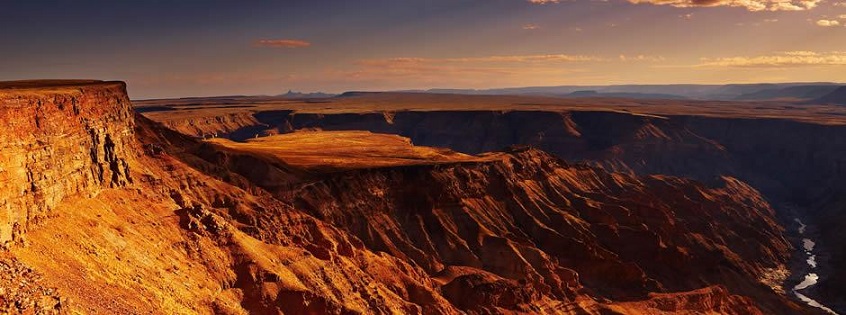
Fish River canyon Namibia - Only The Grand Canyon Is Larger
You are allowed to hike between early May and end of September. The hike is quite strenuous and needless to say, you must be physically fit. The authorities disbelieve the capacity of most people to undertake the hike and will actually insist on seeing a medical certificate of fitness before allowing you to start off. Fish River Canyon is 580 km to the south of Windhoek. The Skeleton Coast has been the graveyard of seafarers and whales and deserves that morbid name. The problem is the dense fogs. And woe to the ship wreck survivor who expects respite onshore! Ahead is the Namib Desert, one of the driest and most unwelcoming places.
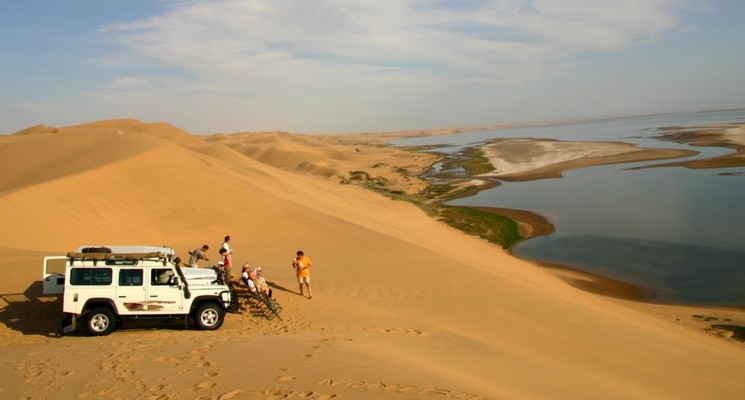
Atlantic Ocean Meets The Desert
Adventure travelers love trekking along the coastline as they enjoy the stark beauty of the area. To the south at Cape Cross, you find a seal colony carrying tens of thousands of seals. The Skeleton Coast Park covers 16,400 sq km and begins at 355 km northwest of Windhoek. The Portuguese explorer Diego Cao reached this part of the world in the year 1486. He is probably one of the people whose experiences discouraged Europeans from venturing ashore until the arrival of the Germans 400 years later. Further south is the Namib-Naukluft National Park, a vast wilderness covering 50,000 sq km.
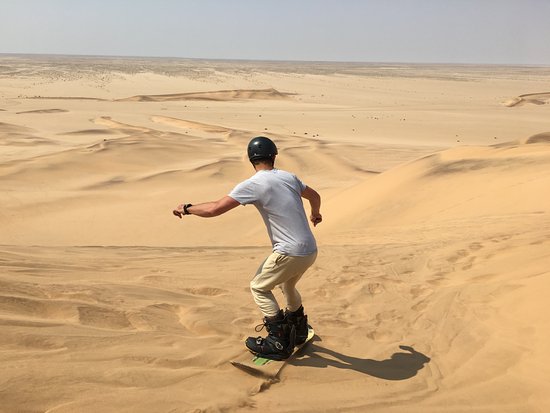
Namibia Swakopmund SandBoarding
The landscape is very diverse and covers mountain outcrops, majestic sand dunes, and deep cut gorges. For really spectacular dunes, the Sossusvlei area is unsurpassed. Here you have dunes rising to 300 m! The orange tint giants extend as far as the horizon and the area has an unreal, unforgettable atmosphere. To the northeast of the country, the well-watered Kavango and Caprivi Strip region offers an unspoilt wilderness suitable for rugged game viewing and camping. The area also promises a feast for bird lovers. Game reserves in the area include: Kaudom, Caprivi, Mahango, Mudumu and Mamili.
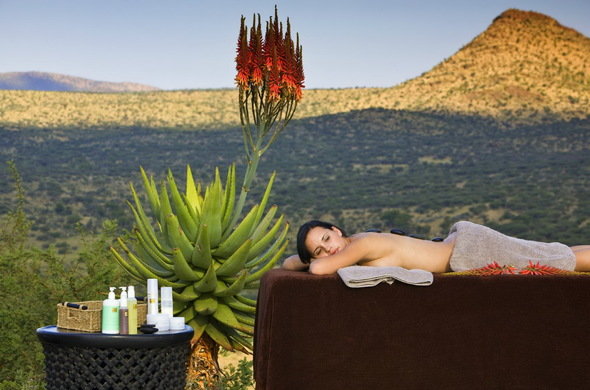
Windhoek Nature Reserve Namibia
Poachers did great damage to wildlife during the years of the civil war in neighbouring Angola. Animal numbers are however building up rapidly. Some of the wildlife in the region includes leopard, elephant, buffalo, cheetah, lion and various antelope species. The Caprivi Reserve falls in an area of swamps and flood plains. Here you have an opportunity to partake fishing, hiking, game viewing safaris and river trips in traditional mokoro boats. In Namibia you can enjoy up to 300 days of sunshine. The coast is temperate and thermometers run between 5C-25C.
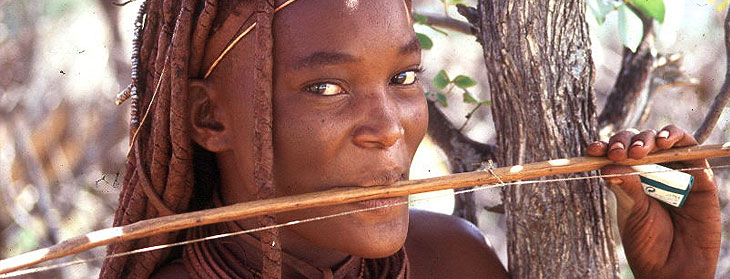
Inland, daytime temperatures range from 20C-34C, but can rise to 40C in the north and south of the country. Winter nights can be quite cold and frost occurs over large parts of the country. The rains inland fall in summer (November-April) and are heaviest in the Caprivi region. Rains do not much affect travel, but beware of flash floods in the vicinity of riverbeds. The best time to travel is over the dry months of March to October, when it is easier to see animals at waterholes. It is best to avoid the Namib Desert and Etosha between December and March when it can get unbearably hot.
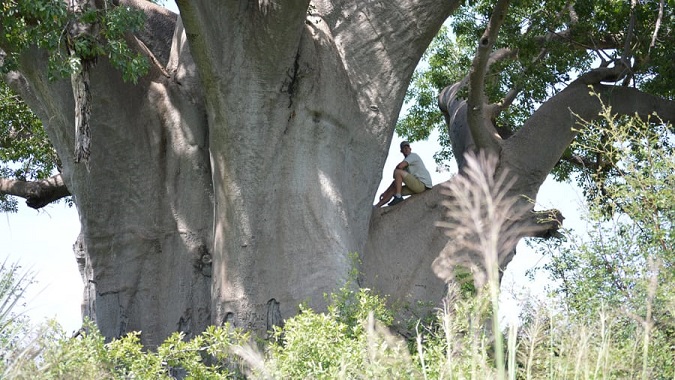
Caprivi Reserve Baobab Tree
Before you travel to this country, make sure you review our Namibia safari and tour offers. You can get by wearing light cottons and linens in summer. Over winter nights and mornings, you need heavier cottons, warmer wraps and sweaters. Comfortable walking shoes are essential, as the ground gets very hot. Some useful stuff to pack includes: camera, binoculars, sunglasses, sun hats, sunscreen and mosquito repellent. Be ready for dusty conditions and carry your clothing, equipment and supplies in dust proof bags. Do not be tempted to buy items made of ivory. You may not be allowed to carry them through customs at home. And it also good that you do not encourage the trade in ivory products that keeps poachers busy.
Tweet
Follow @Charlesfrize
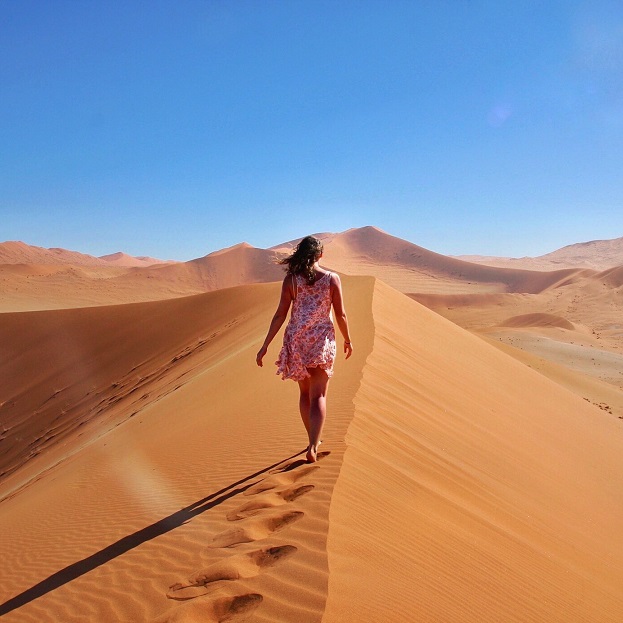






New! Comments
Have your say about what you just read! Leave a comment in the box below.